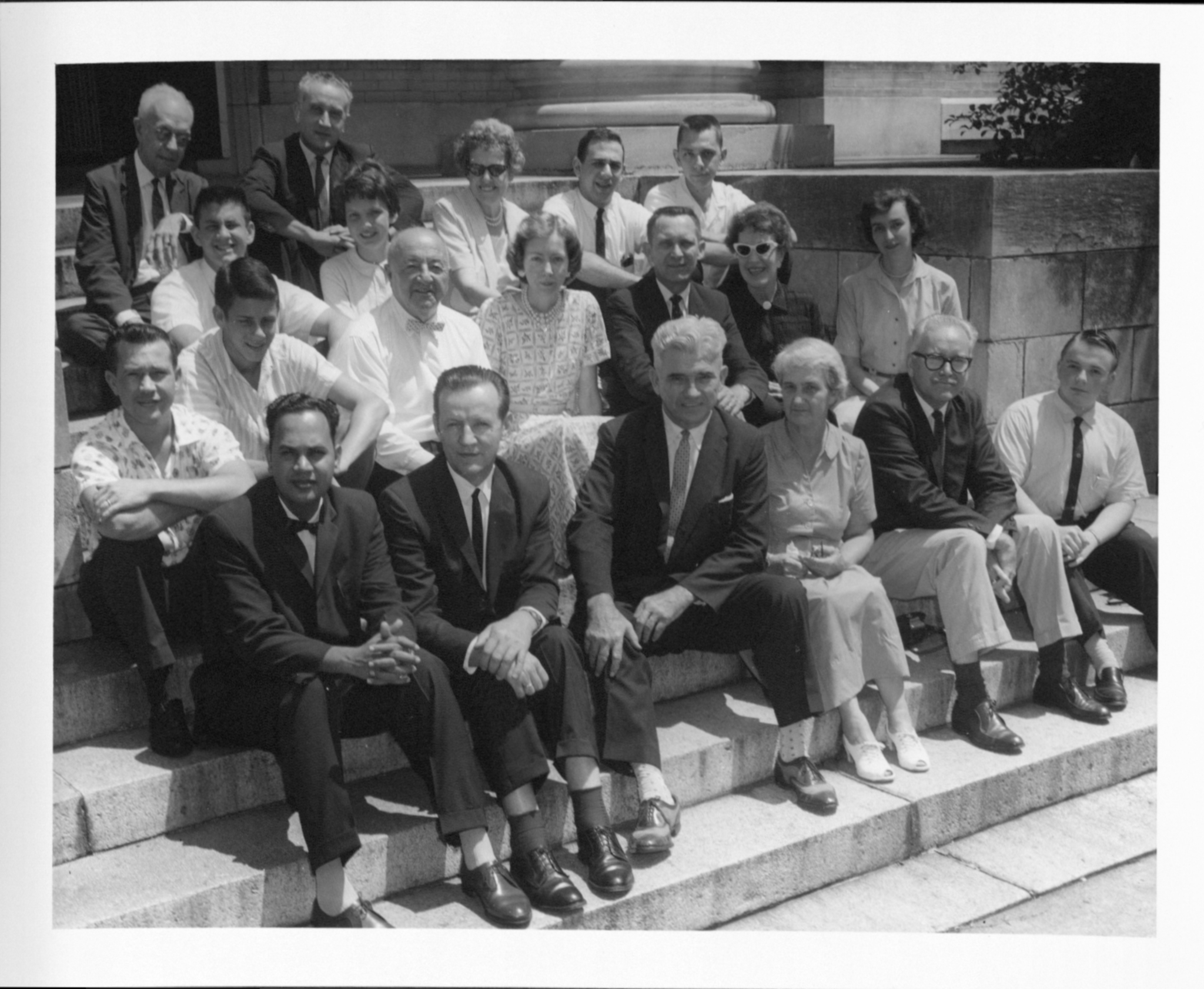Post contributed by Steph Crowell, the Josiah Charles Trent History of Medicine Intern for 2019-2020. Steph curated the digital and physical exhibit Early Studies in Parapsychology at Duke.
Have you ever had a paranormal experience?
It can be easy to dismiss, but we are proud to announce that the new online exhibit Early Studies in Parapsychology at Duke is here to showcase some of the people whose job it is to scientifically study those experiences.
When J.B. and Louisa Rhine came to Duke in 1930, there were no scientific protocols to confirm or reject the reality of clairvoyance or telepathy but that was soon to change. In starting the Parapsychology Laboratory at Duke, the Rhines as well as their fellow researchers made it their jobs to apply the scientific method to these phenomena—with surprising results.
One of the most famous tests to come out of the laboratory is testing with Zener cards. Named after Dr. Karl Zener who helped develop them, Zener cards are simple: each is printed with one of five symbols: a circle, a cross, wavy lines, a square, and a star. A test is deceptively simple. One person holds the cards and another person sits opposite them. A screen separates them. The person with the cards gives them a shuffle and picks one at random and asks the other person if they can sense the symbol on the card.

This test alone required hundreds of tests to determine the probability of randomly guessing correctly and to determine how many guesses in a row were required to get a meaningful result. In addition, it was found the mood of the participant could have a profound effect on results. Researchers also had to ensure that there was no way for a participant to get information from a researcher’s expressions, body language, and that nothing like an accidental reflective surface could give insight to the participant about which card was being held up.
With the laboratory at Duke, there was a wealth of student volunteers to help in testing. Some photos of those students working with both J.B. Rhine and fellow researchers still exist at Duke as part of the University Archives Photograph Collection.
Aside from those, the main collection of Parapsychology Laboratory Records can also be found in the Rubenstein. There are over seven hundred boxes of research notes, paraphernalia, letters, publications, research supplies and more. In addition, the Rubenstein houses other researchers’ personal papers, like Louisa Rhine, J. Gaither Pratt, and William McDougall.

After J.B. Rhine’s retirement in 1965, the laboratory was renamed the Institute of Parapsychology and moved to the Foundation for Research on the Nature of Man. Even later, in 2002, the laboratory had to move again to its current home, The Rhine Research Center.
The Rhine Research Center is a non-profit still operating in Durham. You can read more about them and their current projects on their website here. To this day, the research continues and there are still opportunities for students to be involved.
When our exhibit spaces reopen, we invite you to visit the Josiah Charles Trent History of Medicine Room which will host a physical version of the online exhibit. We would like to give special thanks to Barbara Ensrud, Sally Rhine Feather, and John Kruth from the Rhine Research Center for contributing their insight and several photograph’s from the Center’s own archive.
Post contributed by Steph Crowell, the Josiah Charles Trent History of Medicine Intern for 2019-2020. Steph curated the digital and physical exhibit Early Studies in Parapsychology at Duke.



From 1951 to 1954, I was a student server in the Faculty Dining Room in the East Campus Union. I was privileged to serve many meals to both Doctors Rhine. Their lovely daughters were classmates during part of that time. Betsy later provided me with lovely poodle pups, like the one Dr. Rhine is having fun with in the picture. This was a very special family, indeed !!